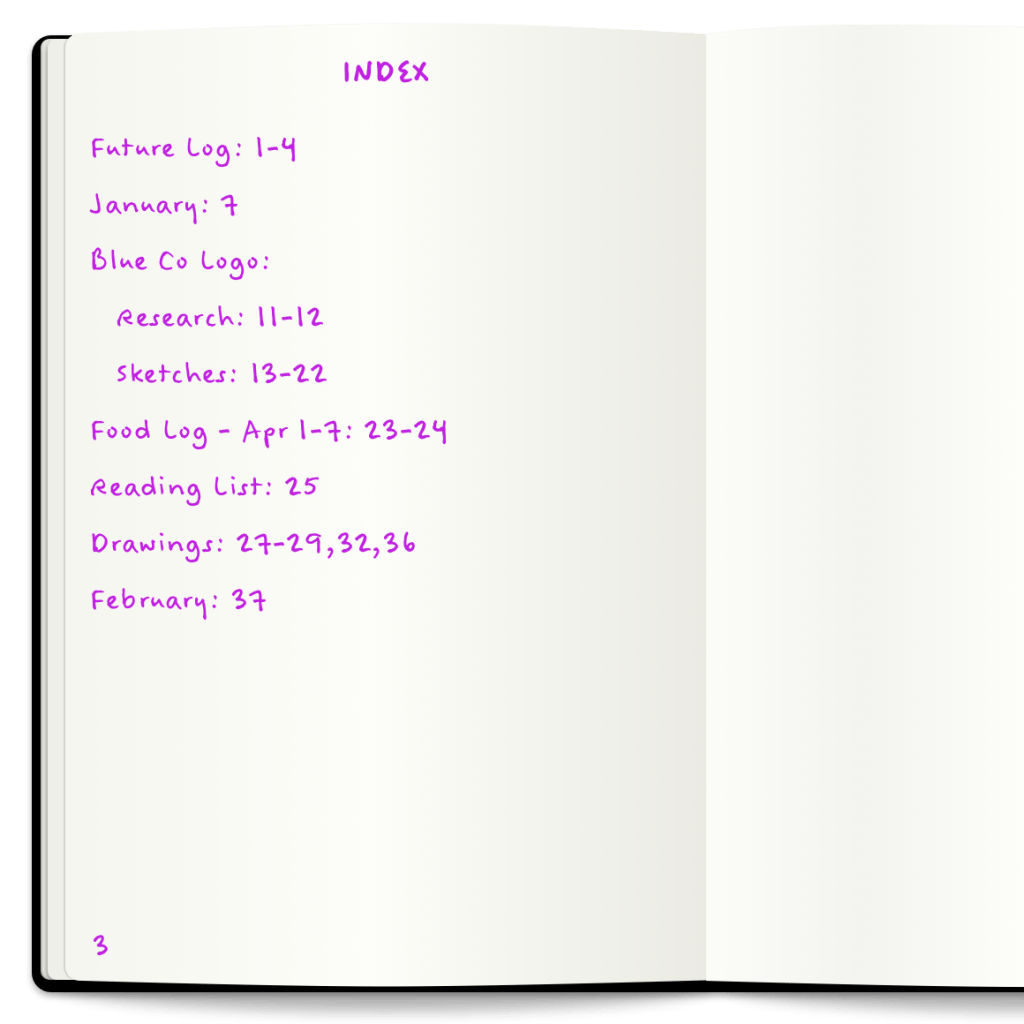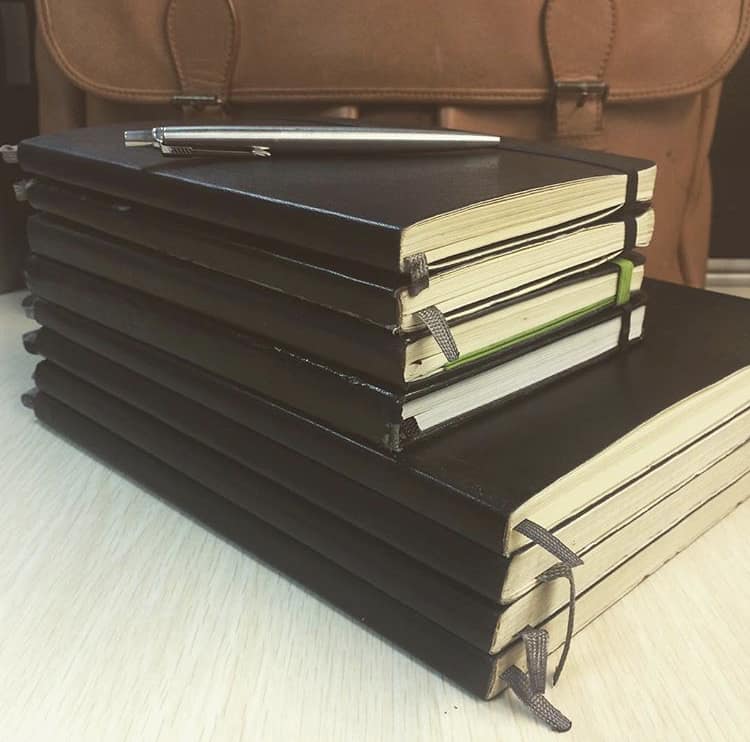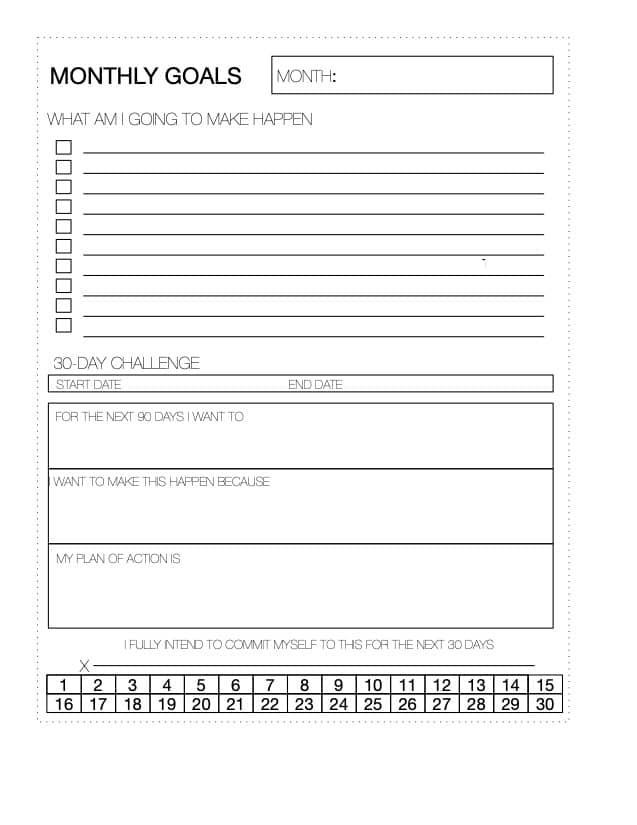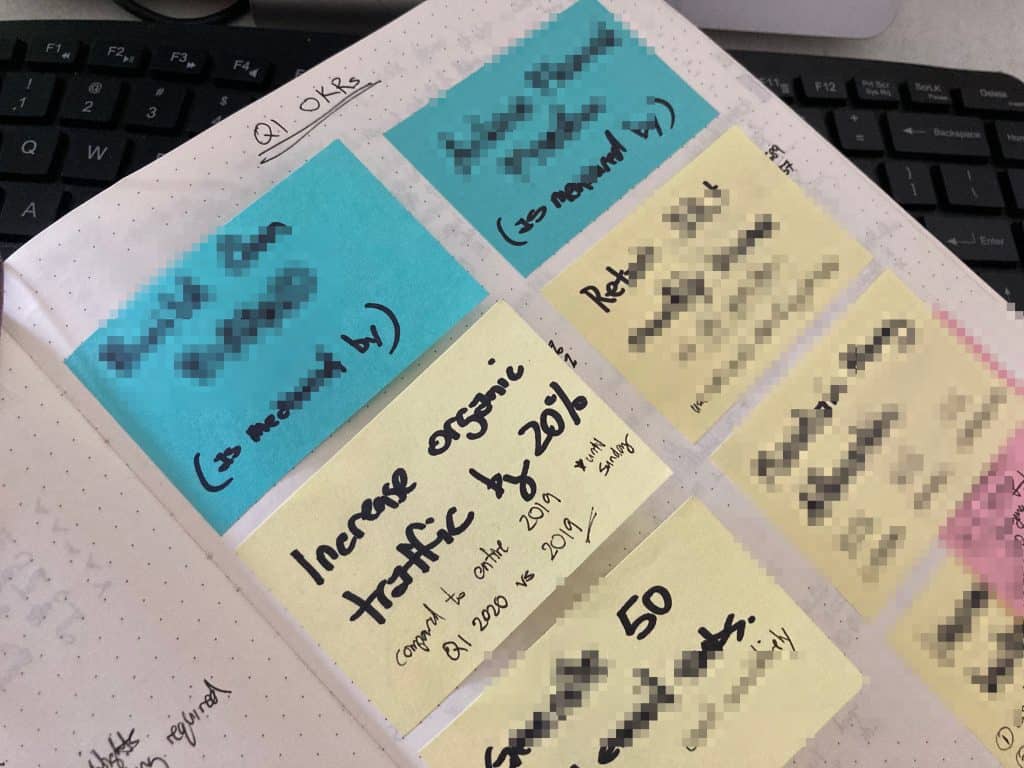Bullet journals have risen to popularity in the last few years. After discovering this wonderful note-taking system, I never looked back. Despite being an advocate of automation tools, I find myself going back to my bullet journal no matter how many apps I tried.
All studies point that writing things down help you remember things more. Yes, you can type faster with laptops and other tools, but it doesn’t help with remembering what you wrote down.
I’ve used the bullet journal on both the corporate and freelance setting. When someone comes into a meeting with a laptop, the first and only thing that comes to mind is they are doing something else like email. It appears very unprofessional.
And even if that person is really taking down notes, that person can’t control what other people are thinking. With high risk and little reward, it’s better to use notebooks instead.
Here are the top 7 lessons I learned from 7 years of bullet journalling. If you’re still trying to figure out how to start with bullet journals, I hope these lessons will help you in your journey.
Keep Your Bullet Journal Notebook Simple
Google “bullet journal ideas” and you’ll find thousands of search results showing you pages with fancy colors and graphics. But that’s not a practical approach.
Will you bring all these colored markers and pens with you every single time you go to a cafe or travel?

This works if you are in your office cubicle or at home. It also works if you’re an artist or have talent in that field, but copying others’ design will only hinder you from getting started.
One of the biggest hurdles for starting something is wanting to do everything at the same time. Colorful pages on your bullet journal might look nice, but does it affect your ability to do your work? 99% of the time, it’s not even about the work you’re supposed to do.
Key takeaway: As I wrote here and here, you don’t reap any benefits if you don’t do anything. If you want to get started with bullet journalling, keep it simple.
Copy This Secret Bullet Journal Key to Double Your Productivity
The bullet journal system provides you with several tools that work by itself, there is something that it lacks. And that’s the ability to quickly find what you’re looking for.
The bullet journal index or table of contents allow you to find what you’re looking for in a chronological order.

But, as you record more to your index, you’ll find that you’ll often find you have pages that are similar to each other. For example, you’d have several pages about your personal tasks, client work, future plans for your own business, and even track expenses or budgeting.
The problem with the bullet journal table of contents is you will find yourself recording each of these over and over because these types of notes don’t just occur once.
That’s where adding an index at the back of your notebook comes in.

You can find this article a good starting point for coming up with your own organization.
Key takeaway: The bullet journal index is your notebook’s table of contents in chronological order. The back index is a way to categorize or group together your pages so you can find them easily.
Create a Detachable Bullet Journal Index
Over time, you’ll completely use up your notebook. No matter how much time and effort you put in keeping things organized, you will run out of space. When this happens, you’ll use a separate notebook.
The question you have to answer now is, “how do you keep track of important pages on your past journals?”
That’s why having a detachable index is handy.
To do this, you need three things:
- Name your bullet journals (e.g. BuJo 1905-1912 for Bullet Journal covering May 2019 to December 2019)
- Transfer the important pages/notes to the detachable index
- Add the index to your current bullet journal notebook
Following these three simple tips allow you to find important notes on your past BuJos easily. You don’t have to open every one of your notebooks and look through the index.
Imagine how time-consuming that would be if you have several bullet journals over the years.

Key takeaway: think of the detachable index as a master table of contents.
Don’t Be Afraid to Use a Separate Page on Your Bullet Journal
One of the main principles in the bullet journal is collections. Here’s what Ryder Carroll, creator of the bullet journal, says about it:
Each module, or Collection, serves to organize related information. You can mix and match, customize, or even create Collections to best suit your needs.
This can be anything from a simple shopping/grocery list, a process workflow, a mind map drawing, or a custom calendar. The customizations start with using a separate, new page on your notebook.
When I was starting, I struggle with starting a new page because I think it’s wasteful. As I unwillingly tried to create collections, over time I realized its power. It helps with organization. It also speeds up finding things you’d need later on.
If you have a separate idea that can turn into a collection, don’t be afraid to use a new page in your bullet journal.
Key takeaway: use a separate page for every collection, then add it to your index later on. This will help greatly when you try to search for it later on.
Improve Using Templates and Sticky Notes
Sometimes, it’s easier to use templates and sticky notes in your bullet journal. For example, every year or month or week, you’ll create the same spread over and over. You can write/design those pages every time, or you can have printable pages like these.

Stick them to the appropriate pages and you’re good to go.
For the sticky notes, I use them for things that I can move around. I use the OKR system to track my personal and professional goals. What I do is write the header then stick my notes there. For example, I have a Q1 OKR header then the rest are listed below.

For the next quarter, I’ll copy over the same ones that I can use again.
Key takeaway: You don’t have to create everything from scratch. The main objective of bullet journals is to help you become more productive. Needlessly recreating every page template is not productive; rather, it just keeps you busy.
Incorporate Other Techniques
If you’ve done your research on note-taking, you’ve most likely come across the Cornell Note Taking System. By itself, it’s already powerful enough for taking notes on topics and/or subjects.

Once you incorporate this into the bullet journal system with the front and back index, rapid logging, and other principles, you’ll come up with a better productivity system.
Key takeaway: The bullet journal is a flexible note-taking system that you can customize. The more you make it your own system, the more you’ll use it. And the more you use your BuJo, the more productive you become.
Keep Using Your BuJo
As with any habit, you will struggle at first. You’ll feel that your bullet journal “isn’t” as inspirational or nice-to-look-at compared to the ones you find on the internet. You’ll think that one notebook might not be enough or you need to use multiple colored pens and markers.
All those doesn’t matter as long as you find what works for you.
I tried multiple notebooks but eventually went back to one. I realized that carrying 3 separate notebooks to a cafe isn’t practical (as I mentioned above). I also noticed myself using it less and less because I have to switch back-and-forth, which adds more time and complications.
The same goes for colored pens. Using multiple pens just to write a single task or collection takes a lot of time. Yes, it may look pretty for outsiders, but they are not the ones who are using your BuJo.
Key takeaway: Keep using your bullet journal. You’ll eventually find a BuJo system that works for you.
Over to You
The bullet journal is one of the best note-taking systems out there. If you customize it further and add best-practices from other systems like the Cornell Note Taking System, it takes your productivity to an entirely new level.
Have you used bullet journals before? Or is this the first time you’re hearing about it?
9 thoughts on “7 Lessons from 7 Years of Bullet Journalling”
I like the note to combine techniques. Bullet journaling with Cornell (I assume for meeting notes). That connected some thoughts for me about using this at work more successfully. Any other thoughts on the combined techniques? For example: do you use the bullet journaling symbols in your Cornell note pages?
Yes, that is for meetings. It provides more flexibility and scanability. Normally, you just need to get the important decisions there and not read all the notes.
I use a specific formatting in meeting notes. I used to do this back when I was working in corporate where meetings are never ending.
This is mainly for tasks.
If a task is assigned to me, I enclose it in double rectangles.
If a task is assigned to someone else (whether that’s delegated to my direct reports or waiting on an external party), I enclose it in a cloud. I add a notation for a date, 5/6 and add a name and encircle it.
So whenever I need to followup, I just look at my cloud notes, look at the date and find out who to reach out to.
Makes things so much easier.
Of course, after the meeting, I look at the double rectangles and add it to my task list. Actually, I add the delegated tasks too.
Hope that’s helpful. The one that I use often really is the back index. Since BuJo is a sequential way of taking notes, the back index provides for categories or tags.
Say you have a category for meetings, personal notes or brainstorming, and normal journal entries.
Then depending on your work, and frequency, you can have different department or projects if they span for a long time.
That way if you’re looking for a meeting related to project A, you’ll filter only using those. Same with your brainstorming. Or maybe you have several projects where you plan and make mind maps.
Let me know if that helps. Right now those are the only two other example i can think of.
Hey,
the detachable index is a really great idea, I immediatly tried it and it works great.
However I’m still struggling with the question “different BuJos für work and privacy or not”. I don’t like the idea of mixing it but on the other hand both are part of my life and affects each other. Do you have any advice on this?
That certainly makes sense. When i started, mostly my BuJo was about work. But ive been freelancing for longer so i didnt thinkof that.
I think your question can be answered by asking what “personal” stuff you put inside it. And probably, where you are located.
If the personal aspects are about you ranting about your boss or that annoying colleague, then make it separate. If it’s about grocery lists or mind maps of a mini project you want to do at home, then it’s okay.
Also, might be good to check your location (country) and company you work for. There may be specific laws or policies about it. If you want to err on the side of caution, keep it separate.
I know its not ideal nor productive, but its something worth doing extra if you are thinking (worrying) about this already.
Oh, i just thought of a compromise. Again, not sure about the “legality” but you can split the notebook in two. Maybe at the half or a third. Then work goes in one section while personal goes in another. That way you only still have one notebook to carry at times. That’ll mean two BuJo indexes, etc.
Or use a binder type notebook. You can easily move the pages around. Thats the easiest solution i can think of.
I consider my Bujo for my entire life. Some days there is nothing personal written other days it feels all like personal tasks and I know it would fall apart if I split it. One would get ignored.
Thanks for a great article btw. Learnt some new tips despite being a long time user of the system.
Hi
Late to the party, and just starting out on BuJo and meeting notes incorporation into BuJo was an area I was unsure of, but now sorted.
What I am having difficulty visualising is this detacable index and what it looks like? And how you add/fix/incoporate it into your current BuJo?
A picture is worth a thousand words … ?
Thanks
Thanks for dropping by. I dont have it in front of me now but imagine your regular BuJo index page. Detachable meaning it’s page i tore from my notebook.
The difference is instead of your normal monthly index and page numbers, i use it as a compilation of all my ⭐️ or important ❗️ notes. Instead of a page, i have a BuJo counter and page.
For example i have a content strategy for my website i planned in my BuJo ‘19 notebook. It’s valuable to me and want to keep it handy.
So i put that in the detachable index, that way it doesnt get lost now that we’re in 2023.
i have it there as [website] content strategy, then BuJo ‘19 p137.
And so on and so forth. When i finish another notebook, i compile what i think is important then put in that detachable index and carry it in the pocket of my new notebook.
Thanks.
Was wondering if it was a separate item in the BuJo catalogue of things you can get.
Understood – a consolidated list of significant past content you need to retrieve in the future as you know as you will go back to them.
Guess it’s for when you are in reach of past versions of your BuJo … be a bit of carry if they travel around with you 😉